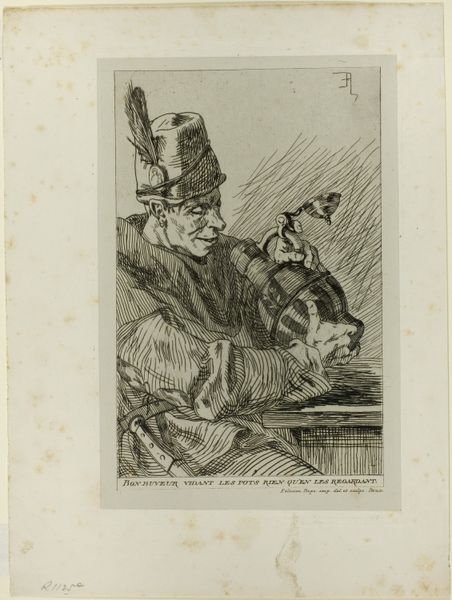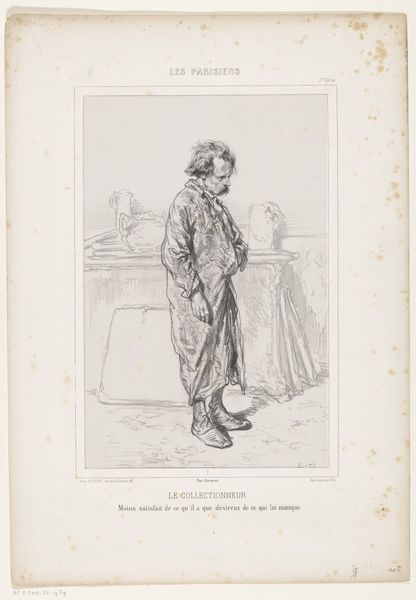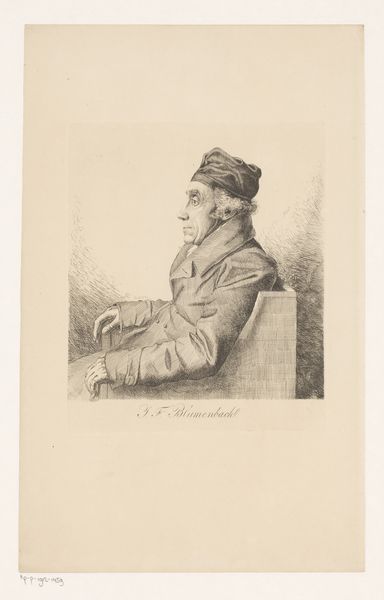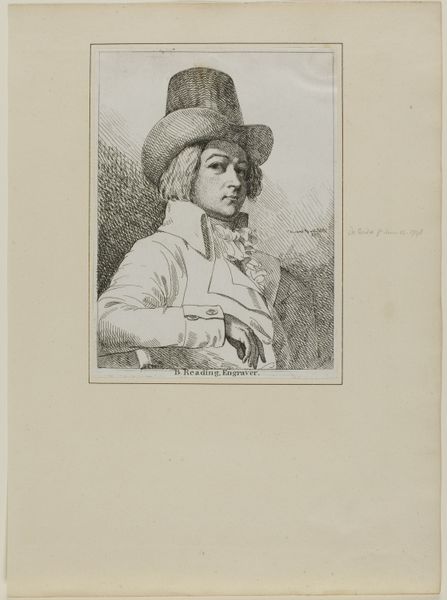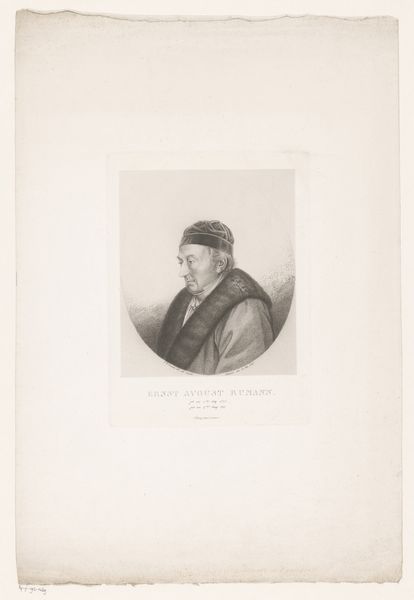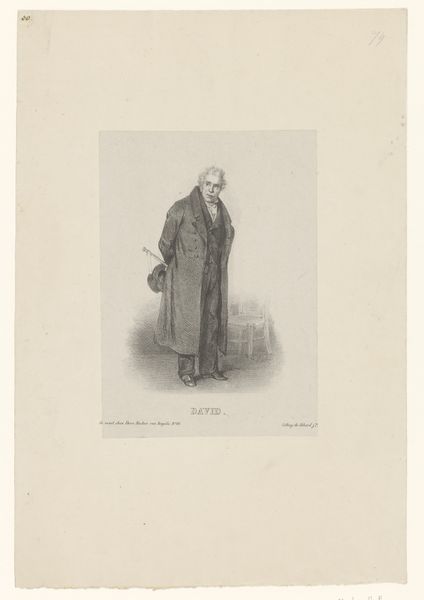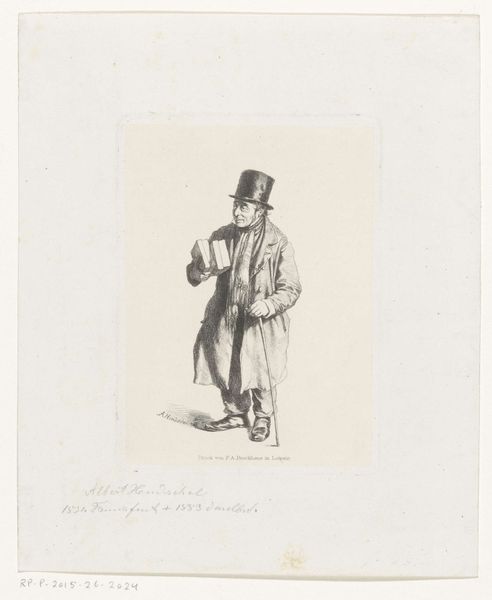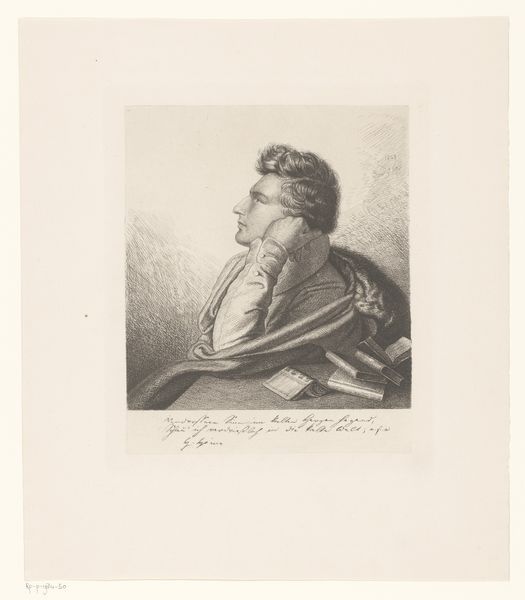
Husbands Always Make Me Laugh: Some say marriage settles a man 1853
0:00
0:00
drawing, lithograph, print, paper, pen
#
portrait
#
drawing
#
lithograph
# print
#
figuration
#
paper
#
pen
Dimensions: 202 × 162 mm (image); 356 × 263 mm (sheet)
Copyright: Public Domain
Curator: Well, here we have "Husbands Always Make Me Laugh: Some say marriage settles a man," a lithograph with pen by Paul Gavarni, created around 1853. Editor: It has the air of melancholy to me. A sad clown reflecting, perhaps, on a joke that no longer seems very funny? There's a wistful weight in the way he bows his head. Curator: The conical hat, the loosely draped cloak... certainly a costume, but also, maybe something more. Gavarni was fascinated by social types, by portraying the realities, sometimes comedic, sometimes bitter, of Parisian life. I wonder, who do you think this figure might symbolize? Editor: Looking at the hat—it has the slouched posture, the air of weary resignation—the pointed cap immediately calls to mind the Duns Scotus cap that's a bit of caricature from academic settings, meant to indicate the folly of scholars in isolation, or perhaps one in decline... Perhaps marriage does that to you. A scholar becomes a fool, lost in his thoughts. Curator: Hmm, interesting. And the glass, half-empty or half-full? Is he about to drink to forget, or has he simply paused to reflect before continuing the charade? Marriage as performance, the husband playing a role. The "always make me laugh" feels ironic, bitter even. It feels more melancholic than comedic, as you first sensed. Editor: Absolutely. And there's a sparseness to the composition. It is a lithograph, yet its texture comes alive via his mark-making with the pen! It directs all our attention to this lone figure and that lone glass of...something. The symbolism then, grows weightier: the marriage that confines and maybe obscures. Curator: Yes. The stage curtain backdrop, adds a flair, and there are different theories on his technique for lithography printing. Perhaps that enhances the mood. Gavarni layers this complexity expertly into what at first glance appears as a simple, almost flippant illustration. Editor: It reminds us how potent these symbols of domesticity or intellect, performance and dress can become in shaping identities and ultimately one's cultural memories. Gavarni reminds us that a cultural memory lives in the symbolism behind familiar forms of life! Curator: Indeed. The quiet power of observation, rendered with a delicate touch—revealing the fragile human condition beneath the social mask. Editor: In the end it seems his melancholy says less about matrimony, but more to his personal convictions—it echoes in its cultural awareness about marriage today!
Comments
No comments
Be the first to comment and join the conversation on the ultimate creative platform.

